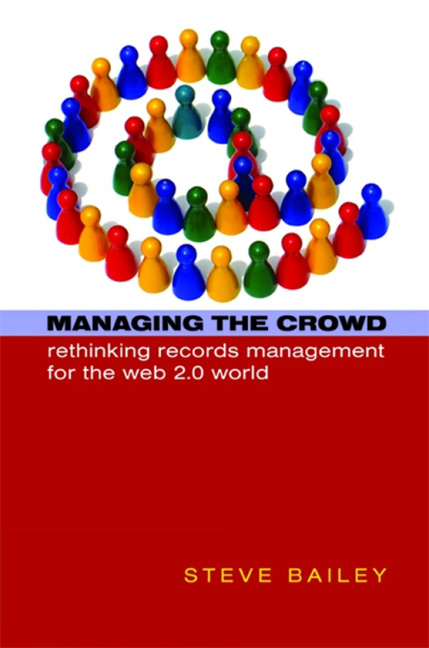Book contents
- Frontmatter
- Dedication
- Contents
- Foreword
- Preface
- Part 1 The Nature Of The Changing World
- Part 2 Is records management no longer fit for purpose?
- 5 The need for critical professional self-examination
- 6 ‘Not all information sources are records’
- 7 The centralized command and control ethos
- 8 ‘Regardless of format...’
- 9 Appraisal, retention and destruction
- 10 The problems with applying existing approaches to appraisal in the Web 2.0 world
- Part 3 Records Management.0 And The Future Of Records Management 121
- Index
9 - Appraisal, retention and destruction
from Part 2 - Is records management no longer fit for purpose?
Published online by Cambridge University Press: 08 June 2018
- Frontmatter
- Dedication
- Contents
- Foreword
- Preface
- Part 1 The Nature Of The Changing World
- Part 2 Is records management no longer fit for purpose?
- 5 The need for critical professional self-examination
- 6 ‘Not all information sources are records’
- 7 The centralized command and control ethos
- 8 ‘Regardless of format...’
- 9 Appraisal, retention and destruction
- 10 The problems with applying existing approaches to appraisal in the Web 2.0 world
- Part 3 Records Management.0 And The Future Of Records Management 121
- Index
Summary
Questions addressed in this chapter
• What do we mean by the term ‘appraisal’?
• What were the factors which led to the development of a rigorous approach to retention management?
• How can we be sure that future generations will not blame us for what we have chosen to discard?
• Does random selection offer a viable alternative to selective appraisal?
• Should we not just keep everything?
Definitions
The related (but not synonymous) professional disciplines of records appraisal, retention management and record disposal lie at the core of our professional identity, and represent the last aspects of established records management practice that I wish to consider in the light of the rise of Web 2.0. In many respects, it is this focus on the management criteria required by our records, and in particular our techniques for determining how long records can safely be retained, that most differentiates us from other branches of information management.
The concept of appraisal extends beyond just consideration of how long records should be retained. The process of appraisal extends to all other aspects of the management of records and may also equally be used to analyse and identify access and security requirements, preservation criteria, resource discovery and appropriate use. However, most commonly the term ‘appraisal’ is used as shorthand to describe and support decisions about retention and particularly to identify how long different types of record should be retained before they can be disposed of in a safe and controlled manner, and it is within this context that it will primarily be considered within this chapter.
The origins and traditional rationale for retention management
‘Records, whether paper or digital, cannot all be retained indefinitely. Storage and maintenance over time is often expensive and, as the volume of records grows, access becomes slower and more difficult’ (Shepherd and Yeo, 2003, 146). Such has been the orthodoxy which has driven records management as a whole, and appraisal in particular, since its inception – and with good reason. Records management evolved as the answer to a problem. The problem in question was how modern organizations coped with the rapidly growing volume of records they were creating. This growth was in part fuelled by the increasingly complex nature of organizational functions and the bureaucracies that serviced them.
- Type
- Chapter
- Information
- Managing the CrowdRethinking records management for the Web 2.0 world, pp. 89 - 108Publisher: FacetPrint publication year: 2008



